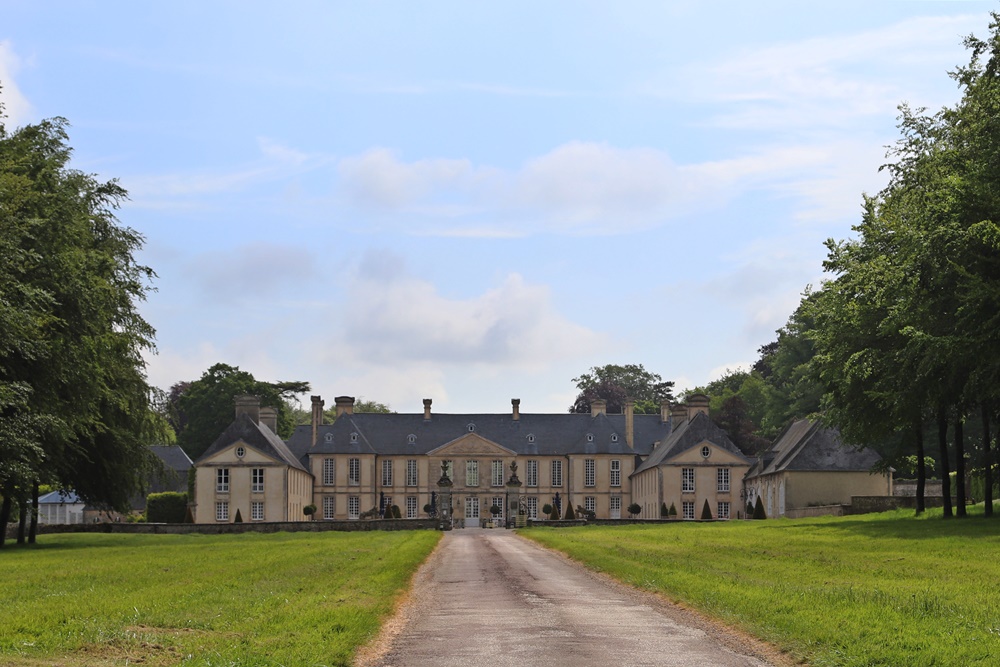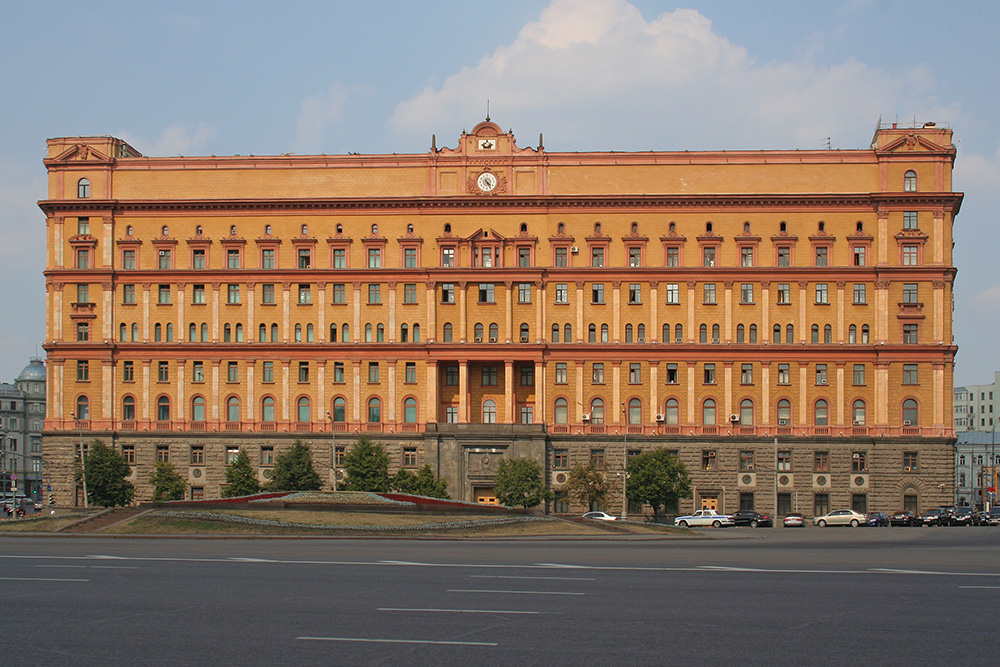Mohnke, Wilhelm
- Date of birth:
- March 15th, 1911 (Lübeck, Germany)
- Date of death:
- August 6th, 2001 (Barsbüttel/Hamburg, Germany)
- Service number:
- SS-Nr.: 15.541 // NSDAP-Nr.: 649.684
- Nationality:
- German
Biography
Wilhelm Mohnke was a German SS-Brigadeführer and Generalmajor of the Waffen-SS.
Life
Wilhelm Mohnke was born on 15 March 1911 in Lübeck. His father, also named Wilhelm Mohnke, was a carpenter. Wilhelm Mohnke attended the Mittelschule (Middenschule) and trained as a merchant. In September 1931, he joined the NSDAP (National Socialist Party) and in November of the same year, he joined Trupp Lübeck of the 4th SS-Standarte Altona. In 1932, he became unemployed. After the German seizure of power, he was deployed as an auxiliary policeman in the city of Lübeck in 1933. After holding various positions in the SS, he was transferred to the SS-Stabswache (Staff Guard) in Berlin in March 1933.
In September 1939, as commander of the fifth company of the Leibstandarte SS Adolf Hitler (LSSAH), he took command during the attack on Poland. On September 29, 1939, he received the Iron Cross 2nd Class and a few weeks later, on November 8, 1939, the Iron Cross 1st Class. After the attacks on Poland, he and his company fought on the Western Front in the attempt to overcome the encircling British and French troops at the Battle of Dunkirk. Shortly before Dunkirk, the battalion came under heavy fire from the British and, due to the poor training of the LSSAH officers, suffered many casualties. On May 28, 1939, after Ernst Schützek was wounded, Mohnke succeeded him as Commander of the second battalion of the LSSAH. Mohnke was then responsible for the Wormhout massacre that took place on the same day. 96 British prisoners of war and one Frenchman died in this incident near Wormhout, France.
After several prisoners of war were shot in various locations, the SS personnel were dispersed. They received orders from Mohnke to herd British prisoners of war from the "Royal Warwick Regiment" of the "Chesire Regiment" into a barn, after which an exploding grenade was thrown into it. The survivors were machine-gunned. Some British soldiers also survived and were found a short time later by medical personnel and taken to a hospital. After recovering, these British soldiers were placed in a POW camp. In the spring of 1941, Mohnke fought as Commander of the Second Battalion of the LSSAH in the Balkan War. There, on April 6, he was wounded for the third time in an air raid. As a result of this injury, he retained a shortened leg and suffered from chronic pain, which led to his addiction to morphine.
In 1942, Wilhelm Mohnke was assigned by Josef Dietrich to a position in a tank division within the LSSAH. In the summer of 1943, Mohnke became first commander of the 2nd SS Panzergenadier Regiment "Hitlerjügend" (later the 12th SS Panzer Division). In June 2044, his regiment fought in the Allied landings in Normandy. On June 7, units of his regiment shot 36 Canadian prisoners of war at Fontenay-le-Pesnel near Tessel. On June 8, the 2nd battalion of his regiment, under the command of Obersturmbannfuhrer Bernhard Siebken, shot three Canadian prisoners of war at Le Menil-Patry. The German units, including Mohnke's, that pushed the Allies back into the sea were largely unsuccessful due to heavy losses. To boost morale, the division leadership ordered the widespread distribution of Iron Crosses. Mohnke received his Knight's Cross of the Iron Cross on July 11, 1944.
When several prisoners of war were shot, the SS personnel were dispersed. Mohnke ordered the Seventh Company to herd the prisoners of war of the Royal Warwick Regiment, the Cheshire Regiment, and the Royal Artillery into a barn, after which an exploding hand grenade was thrown into it.
On August 20, 1944, he took over command of the LSSAH after the previous commander, Theodor Wisch, was captured in the Falaise Pocket. In December 1944, during the Ardennes Offensive, soldiers of Kampfgruppe Peiper were involved in the Malmedy massacre. It is unclear to what extent Mohnke was involved. The Malmedy trial in 1946 took place without him, as he was a Soviet prisoner of war. After the end of the Ardennes Offensive, Mohnke was appointed Brigadeführer on January 30, 1945, due to a head wound he sustained during an air raid on February 6, 1945. incurred, he had to hand over command of the LSSAH to Otto Kumm.
After a brief rest to recover, Mohnke was summoned to the Reich Chancellery in Berlin in mid-April 1945. There, during the night of April 22–23, 1945, he was appointed Commander of the Government Defense. This Kampfgruppe (combat group) consisted of nine battalions. On May 1, 1945, with the approval of Hitler's confidants, including his secretary Gerda Christian and his adjutant Otto Günsche, Mohnke attempted an escape from the surrounded government district from the bunker of the New Reich Chancellery. On May 2, he was captured by Soviet troops in Pankow and flown to Moscow. On May 18, 1945, he was sent to Moscow by the Second Main Administration of the Soviet KGB. Wilhelm Mohnke remained in Soviet captivity until October 10, 1955, spending most of his time in POW camp 5110/48 Woikowo.
After his release, he moved to Hamburg and worked there as a car salesman. From 1979 onward, Mohnke was in contact with Stern reporter Gerd Heidemann. He advised him on National Socialist affairs and connected him with Nazi memorabilia dealers. This led Gerd Heidemann to Konrad Kujau, a forger of the Hitler diaries. Heidemann later showed Mohnke the alleged Hitler diaries and read passages to him. Wilhelm Mohnke died on August 6, 2001, in Damp near Eckernförde.
Promotions:
01.11.1931: SS-Anwärter
16.11.1931: SS-Mann
05.03.1932: SS-Scharführer
09.03.1933: SS-Truppführer
28.06.1933: SS-Sturmführer
01.10.1933: SS-Sturmhauptführer
01.09.1940: SS-Sturmbannführer
21.06.1943: SS-Obersturmbannführer
21.06.1944: SS-Standartenführer
04.11.1944: SS-Oberführer
30.01.1945: SS-Brigadeführer
Career:
01.09.1931: entered the NSDAP
01.11.1931: entered the SS, SS-Trupp Lübeck, SS-Standarte 4, Altona
00.01.1932: SS-Mann, 1. Sturm, I. Sturmbann, SS-Standarte 22
17.03.1933: SS-Truppführer, SS-Stabswache Berlin
02.08.1933-07.10.1933: SS-Sturmführer, Chef, 2. Sturm, Sonderkommando Berlin
07.10.1933: SS-Hstuf, Chef, 3. Sturm, II. Sturmbann, LAH
13.04.1934: SS-Hstuf, Chef, 2. Sturm, II. Sturmbann, LAH
00.10.1934: SS-Hstuf, Chef, 5. Sturm, I. Sturmbann, LAH
00.09.1939: SS-Hstuf, Chef, 5. Kompanie, I. Bataillon, SS-Regiment LAH, SS-VT - campaign in Poland
07.09.1939: WIA
00.05.1940: SS-Hstuf, Chef, 5. Kompanie, I. Bataillon, SS-Regiment LAH, SS-VT - campaign in the West, Dunkerque
28.05.1940-06.04.1941: SS-Hstuf, Führer, II. Bataillon, SS-Infanterie-Regiment 'LAH', SS-VT - massacre in Wormhout, Esquelbecq
06.04.1941: SS-Stubaf, Kommandeur, II. Bataillon, SS-Regiment LSSAH, SS-VT - campaign in the Balkans - severely WIA during an air raid and evacuated
01.02.1942-16.03.1942: SS-Stubaf, Führer, SS-Panzer-Abteilung, SS-Division 'LSSAH'
21.06.1943: SS-Ostubaf, Führer, SS-Ersatz-Bataillon 'LAH'
12.09.1943-19.08.1944: SS-Ostubaf, Führer, SS-Panzergrenadier-Regiment 26, 12. SS-Panzergrenadier-Division 'Hitlerjugend' - campaign in Normandy
07.06.1944: massacre in Fontenay-le-Pesnel near Tessel
08.06.1944: massacre in Le Mesnil-Patry
20.08.1944-06.02.1945: SS-Staf, Kdr, 1. SS-Panzer-Division 'Leibstandarte-SS Adolf Hitler' - campaing in the Ardennes, Malmédy
06.02.1945: SS-Brif, WIA to the head during an air raid
10.02.1945-22.04.1945: SS-Brif, Führer-Reserve, SS-Personalhauptamt
22.04.1945-02.05.1945: SS-Brif, Führer, SS-Kampfgruppe 'Mohnke'
01.05.1945-02.05.1945: SS-Brif, Kdr, Verteidigungs-Abschnitt "Z", Reichskanzlei Berlin
02.05.1945: captured by the Soviet near Pankow and flown from Strasuberg to Moscow - Soviet POW in Camp 5110/48 in Woikovo
10.10.1955: released
Do you have more information about this person? Inform us!
- Rank:
- SS-Sturmbannführer (Major)
- Unit:
- Kdr, II. Bataillon, LSSAH
- Awarded on:
- December 9th, 1940
- Period:
- Second World War (1939-1945)
- Awarded on:
- September 21st, 1939
- Period:
- Second World War (1939-1945)
- Awarded on:
- November 8th, 1939
- Period:
- Second World War (1939-1945)
- Awarded on:
- February 10th, 1940
- Period:
- Second World War (1939-1945)
- Awarded on:
- October 3rd, 1940
- Period:
- Second World War (1939-1945)
- Awarded on:
- October 3rd, 1940
- Period:
- Second World War (1939-1945)
- Awarded on:
- 1941
- Period:
- Second World War (1939-1945)
- Awarded on:
- September 15th, 1941
- Period:
- Second World War (1939-1945)
- Rank:
- SS-Sturmbannführer (Major)
- Unit:
- Führer, II. Bataillon, SS-Infanterie-Regiment Leibstandarte-SS "Adolf Hitler"
- Awarded on:
- December 26th, 1941
- Period:
- Second World War (1939-1945)
- Awarded on:
- 1942
- Period:
- Second World War (1939-1945)
- Awarded on:
- 1942
- Period:
- Second World War (1939-1945)
- Awarded on:
- 1942
- Period:
- Second World War (1939-1945)
- Awarded on:
- 1943
- Period:
- Second World War (1939-1945)
- Rank:
- SS-Obersturmbannführer (Lieutenant-colonel)
- Unit:
- Kommandeur, SS-Panzergrenadier-Regiment 26, 12. SS-Panzergrenadier-Division “Hitlerjugend”, I. SS-Panzer-Korps, Heeresgruppe B
- Awarded on:
- July 11th, 1944
“On the 07.06.1944 the reinforced SS-Pz.Gren.Rgt. 26 (with the subordinated SS-Pz.Pi.Btl. 12 and SS-Pz.Aufkl.Abt. 12) under the command of SS-Obersturmbannführer Willi Mohnke received the mission to hold the line Rots (8 km NW of Caen)—St. Manvien—Le Mesnil Patry—Cristot. With strong tank and infantry forces, which attacked following powerful artillery preparation that included fire from heavy naval guns, the enemy tried to overrun the positions of the SS-Pz.Gren.Rgt. 26 with the aim of cutting off the German salient St. Manvien—Le Mesnil Patry—Bronay—Cristot and destroying the forces within it. By doing so the enemy would sever the connection between the 12. SS-Panzer-Division ‘Hitlerjugend’ and the Panzer-Lehr-Division, as well as create favourable conditions for a breakthrough towards Caen. This in turn would permit the capture of the city itself. Furthermore this would enable the enemy to have the opportunity to roll up the positions of the 12. SS-Panzer-Division ‘Hitlerjugend’ and the Panzer-Lehr-Division.
At 16:00 on the 08.06.1944 enemy tanks broke through in the direction of Le Mesnil Patry. However this blow was absorbed and fended off by the II./SS-Pz.Gren.Rgt. 26. On the 09.06.1944 a strong enemy armoured formation burst out from the direction of Touzy and advanced towards Tilly. At around 17:00 the left wing of the reinforced SS-Pz.Gren.Rgt. 26 came under continual attack by tanks. However due to our strong defense the enemy armoured attack did not meet success, and 3 hostile tanks were destroyed. On the 10.06.1944 the enemy again tried to break through towards Le Mesnil Patry from the Brouay area with an armoured formation. This attack was repulsed by the SS-Pz.Gren.Rgt. 26.
At 15:55 on the 11.06.1944 enemy tanks and mounted infantry succeeded in breaking into friendly lines in the sectors of the III. & II./SS-Pz.Gren.Rgt. 26 as well as the subordinated SS-Pz.Pi.Btl. 12. Enemy strength consisted of over 35 tanks. The reinforced SS-Pz.Gren.Rgt. 26 under the personal leadership of its regimental commander, along with elements of the II./SS-Pz.Rgt. 12 under the command of SS-Sturmbannführer Prinz, immediately took up the fight against the overwhelming enemy forces. The reinforced SS-Pz.Gren.Rgt. 26 succeeded in intercepting the enemy thrust, which was aimed at the main road from Caen to Tilly. The enemy attacks were thrown back and smashed, with 34 enemy tanks being destroyed in the process (21 by the II./SS-Pz.Rgt. 12 and 13 in close combat by the Grenadiers of the SS-Pz.Gren.Rgt. 26).
In the time period 12.-17.06.1944 the enemy was quiet in the sector of the SS-Pz.Gren.Rgt. 26. However heavy harassing artillery fire was still conducted, with some fire missions using up to 10-15000 rounds.
On the 17.06.1944 the enemy succeeded in penetrating into the left wing of the SS-Pz.Gren.Rgt. 26 with tank and infantry forces following a strong artillery preparation supported by naval guns. However two counterthrusts under the personal leadership of the regimental commander succeeded in inflicting such strong losses on the enemy that, after two days of hard fighting, he surrendered the territory he had won, gave up his attack objectives and pulled back his lines about 2 km to the north.
The successes of the reinforced SS-Pz.Gren.Rgt. 26 are first and foremost attributable to the personal intervention of its regimental commander. SS-Obersturmbannführer Mohnke continues to be handicapped to this day by a severe leg wound he sustained during the Greek campaign. Despite this physical hindrance he remains a persistent example to his men in combat. After the fall of the Bataillon commander of the II./SS-Pz.Gren.Rgt. 26 and 3 of its Kompanie commanders, each counterattack was personally and ruthlessly led by the regimental commander.
SS-Obersturmbannführer Mohnke proved himself as a tried and tested military leader in the Polish, Western and Southeastern campaigns, and he received the German Cross in Gold very early on in 1941.
On the grounds of his achievements in the fighting against the Anglo-American invasion force during the time period 06.-20.06.1944, I hold SS-Obersturmbannführer Mohnke as one who is worthy of the high award of the Knight’s Cross to the Iron Cross.”
Nr. 870
- Period:
- Second World War (1939-1945)
- Rank:
- SS-Standartenführer (Colonel)
- Awarded on:
- July 1944
Sources
- Photo 1: Willi Schumacher Collection
- - Die Ordensträger der Deutschen Wehrmacht (CD), VMD-Verlag GmbH, Osnabrück, 2002
- Fellgiebel W.P., Elite of the Third Reich, The recipients of the Knight's Cross of the Iron Cross 1939-1945: A Reference, Helion & Company Limited, Solihull, 2003, ISBN 1-874622-46-9
- Patzwall K., Scherzer V., Das Deutsche Kreuz 1941-1945, Geschichte und Inhaber Band II, Verlag Klaus D. Patzwall, Norderstedt, 2001, ISBN 3-931533-45-X
- Schneider J.W., Their Honor was Loyalty!, R. James Bender Publishing, 1977
- Axis History Biographical Research via Axis History Forum
- Microfilm Publication A3343. US National Archives.
































